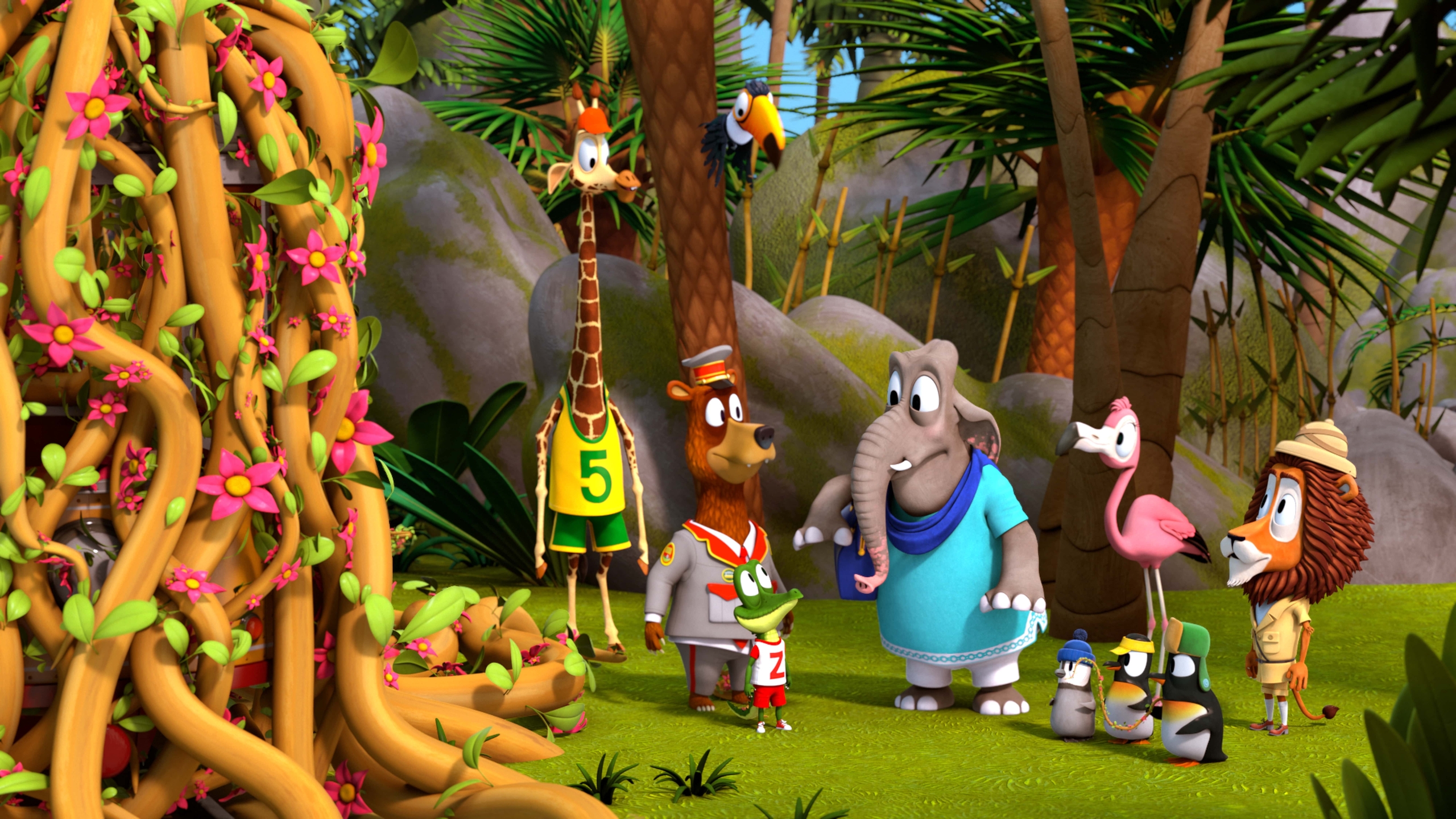No AD, No Game
By Andrea Giménez – Dicapta QC and Audio Describer
How does a blind child perceive audiovisual content?
Children's content is not only designed to be entertaining but also educational. However, content is not often designed for children with visual disabilities; and sometimes the original audio of the content is not enough to follow the story without visual cues.
 Ziggy and the Zoo Tram series, broadcast by Semillitas, is a great example of this case, because it is impossible to understand the content by just listening to it. Here is when Audio Description (AD) is not just a supportive but an essential resource.
Ziggy and the Zoo Tram series, broadcast by Semillitas, is a great example of this case, because it is impossible to understand the content by just listening to it. Here is when Audio Description (AD) is not just a supportive but an essential resource.
About the series
Origin: Belgium
Episodes: 56 (divided into 2 seasons)
Episode Duration: 11 minutes
Plot Summary:
In the middle of the ocean, on an island within a crater, a group of animals prepares to go to work at a zoo in the city. At the end of each day, the zookeeper, Mr. Timmers, allows them to return home on the condition that they come back the next day, before the zoo opens to the public. This is a secret between the animals and Mr. Timmers, as humans should not know that the animals live lives like people: walking on two legs, wearing clothes, talking, and having their own homes.
At the zoo, each animal has its own habitat-based enclosure, and they must entertain visitors as if they were wild animals. The animals travel to the zoo by tram, crossing various landscapes such as a jungle, a swamp, snowy mountains, a forest, and an underground tunnel. Along the way, they face new challenges every day, which test their skills and teamwork to ensure they arrive at work on time. Ziggy, the crocodile, is passionate about inventions and constantly creates gadgets that transform the tram to overcome the obstacles they face so they can reach the zoo on time.
In the fragment chosen for this article, Brian, the giraffe, is a little sad because he is tired of playing basketball alone. His friends challenge him but, this time, the tram will be a player too, which will add excitement to the match.
Ziggy and the zoo tram series is one of the top cases in which the magic of Audio Description is shown to its fullest and we love to be able to show the results. We invite you to listen to a fragment of Episode #13 of Season 2, without AD and then with AD to see the difference:
|
Note: This version does not have moving images, since the goal is to draw attention to the audio, in order to try to understand what is happening in this scene without AD. |
Note: Please bear in mind that this is only a fragment in the middle of one episode so you will probably notice that there are some characters or elements that are not fully described because they have been described earlier in this episode. Enjoy it! |
.
.
.
.
.
.
.
.
.
.
.
.
.
.
Challenges and solutions:
First of all, we identified the visual information that was essential to understanding the story and was not communicated through the original audio. Unlike other contents we've worked with, in the Ziggy series there is a lot of missing information so we had to pay closer attention to find a way to complete it the best way possible.
It was a big challenge to describe such long scenes in which there were several characters performing different actions, all at the same time, and also with very imaginative and unusual situations.
Although there were many spaces available that allowed for complete descriptions (which is heaven for an Audio Describer), we have to sacrifice some details in order to respect the original sounds, pauses and rhythm (like sound effects or character reactions). Finding a balance was the most challenging part in this series.
We also have to keep in mind to use appropriate language for the target audience, according to the comprehension level of children from 4 to 6 years old, and a neutral Spanish to make it as universal as possible.
To enhance the final result, the narration was performed by a child with a clear and lively voice that added a sweet, friendly and fun tone. Although the description and intonation of the AD is usually as neutral and impartial as possible, for this series we tried to give it more life because we believe it powers the engagement of children to the content.
By listening to the fragment mentioned above we clearly see the differences:
Without AD, the experience drags on, with many unanswered questions. The little information available isn't enough to mentally construct what's happening. As a result, it becomes boring, attention wanes, and it's likely that the user stops engaging with the content and misses out on learning or having fun.
With AD, everything makes sense. The characters appear, the scene becomes interesting and even the time seems to pass faster. The energy of the basketball game is felt, scores increase, and we discover it is a close match until there is a winning team.
Audio Description is an essential resource, because without it, there wouldn't be a game in this episode. With AD, all children are able to enjoy the same content, since they can receive the same message and they can comment and learn on equal terms as their peers.
With AD, the game is fun for all ✨
